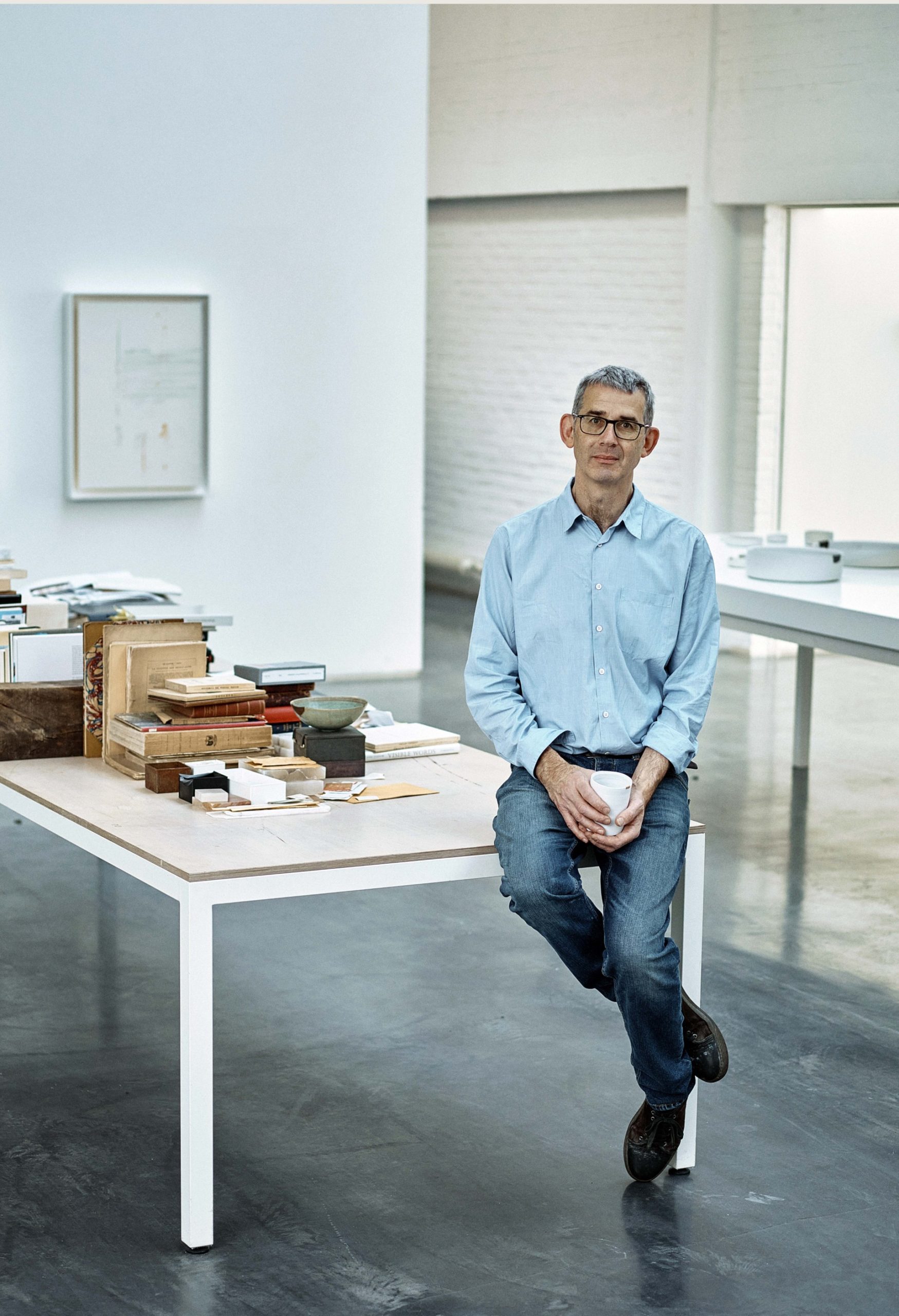
Edmund De Waal
Edmund de Waal is an internationally acclaimed artist and writer, best known for his large-scale installations of porcelain vessels, often created in response to collections and archives or the history of a particular place. His interventions have been made for diverse spaces and museums worldwide, including Waddesdon Manor, Buckinghamshire; the Musée Nissim de Camondo, Paris; The British Museum, London; The Frick Collection, New York; Ateneo Veneto, Venice; Schindler House, Los Angeles; Kunsthistorisches Museum, Vienna and V&A Museum, London. His first set design featured in the 2017/18 Season at the Royal Opera House for Yugen, a new ballet by choreographer Wayne McGregor.
Writers, poets, and musicians have been constant touchstones for de Waal’s installations – from Paul Celan, Emily Dickinson and Wallace Stevens, to John Cage and Walter Benjamin; most profoundly so for his solo exhibitions; their bright traces (2022) at the Gana Art Center, Seoul; a sort of speech (2019) and Irrkunst (2016) at Galerie Max Hetzler, Berlin; breath, Ivorypress, Madrid (2019); the poems of our climate, Gagosian, San Francisco (2018); and Atemwende, Gagosian, New York (2013).
De Waal is also renowned for his bestselling family memoir, The Hare with Amber Eyes (2010), and The White Road (2015). His most recent book, Letters to Camondo, a series of haunting letters written during lockdown, was published in April 2021. He was awarded the Windham-Campbell Prize for non-fiction by Yale University in 2015. In 2021 he was made a Fellow of the Royal Society of Literature and awarded a CBE for his services to art. In 2024 he was awarded the Chevalier de l’Ordre des Arts et des Lettres.
b.1964 Nottingham. He lives and works in London.
College affiliation: Harris Manchester
